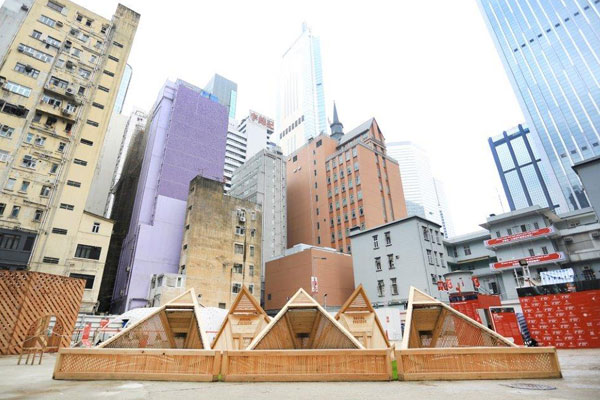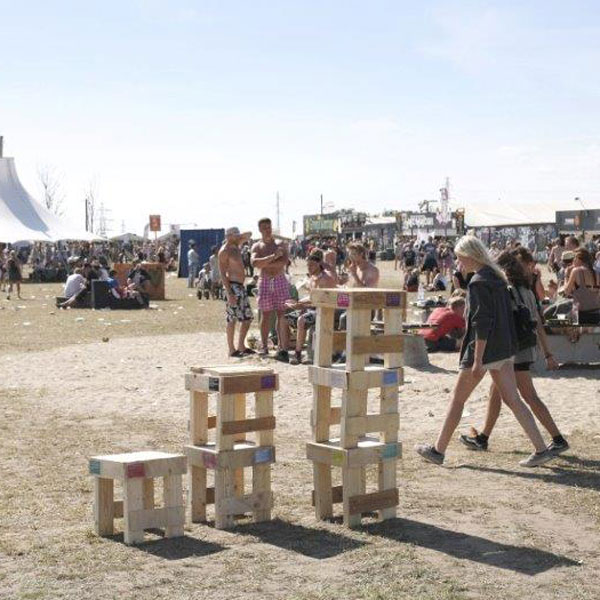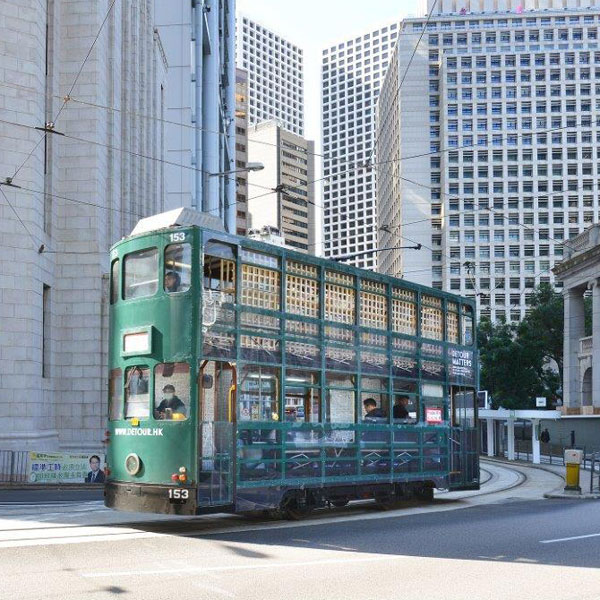The Cave Workshop talks upcycling, wood scavenging and shady business deals, ahead of their Designed by HK talk on 20 September, writes Christie Lee.

September 4th, 2014
The Cave Workshop isn’t a carpentry business, nor is it a recycling firm – or at least, these are perceptions that members of the nine-member-strong design collective has been trying to do away with. “We’ve gotten some really bizarre phone calls over the years, like ‘oh there’s this huge plank of wood down my place, would you like to come collect it?’” Chan Jianchi chuckles.
Ever since launching in 2010, The Cave Workshop has prided itself on being a creative think tank rather than a conventional design firm. How? By outsourcing production to woodworkers and factories after having come up with the design concept. “For us, design is not so much a product as it is a kind of lifestyle,” another member of the group, Eqqus Lee adds.
It’s been a busy year for the design outfit. Besides seeking to rebrand the firm – “so that people wouldn’t think we are carpenters anymore!” Lee exclaims – one of their proudest achievements, the Boltie stool has also entered the second round (at the time of interview) at the Good Design Award 2014.
We talk to Lee, Chan and Chau Wing Chung from the nine-member design outfit, ahead of their talk “Design for Upcycling Culture”, as part of Hong Kong Design Centre’s Designed by HK sharing sessions, on 20 September.

Wave of Growth installation for Detour 2012
How did you get your start as a design firm specialising in upcycled furniture?
Eqqus Lee: It was a rather incidental beginning really. We were looking for a table and a chair or two to fill up the studio space, and we didn’t have a lot of money, so we decided to try our hands at making furniture out of wood pallets we’d scoured from the streets.
Jianchi Chan: That was how we first started, but we’re actually trying to move away from that. After all, in order to produce furniture that is sellable, merely using wood pallets scavenged from the streets is too risky.
Would you still consider what you do upcycling then?
Lee: Yes, I think there are many different ways of looking at upcycling. For some, it might be making something out of materials scavenged from the streets. For us, it’s about sustainability. We want the focus of upcyling to be the versatility of the material, rather than where the material is being sourced.
Chan: And we’re still applying the initial method of upcycling to one-off art installation pieces.

The results of a workshop in Dream City, Roskilde Festival 2012, Denmark
Why wood?
Lee: Wood is one of the easiest materials to work with. You don’t need to melt it, unlike metal.
Chan: We wanted design to become a part of everyday life and wood is one of the most relatable materials around. A lot of the tools were made from wood in ancient times – back when there was no technology whatsoever.
Chau Wing Chung: Because wood is an organic material, it’s also quite amazing to see the change in texture and hue over time.
With the success of the Boltie stool, do you see yourselves moving into more mass-produced furniture pieces?
Chau: That’s a definite possibility, though we still want the concept to take precedence over the product. After all, we consider ourselves as a think tank above anything else.
Lee: It’s also hard to compete with the bigger brands. From a business point of view, the bigger factories are unwilling to shoulder the risk, as our projects tend to be more experimental.
Chan: When we launched the Boltie stool, we searched high and low for a distributor. We found one – Signed By, a design store owned by a Frenchman in Sheung Wan. But after we signed the contract, we completely lost contact with him.
Lee: It wasn’t until I passed by the storefront a couple of weeks ago did we realise that it’d gone out of business! We’d actually already put the stool aside for other projects, but then a designer friend goaded us into entering the Good Design Award.
Chan: Well I guess we just have to see how it goes…

The Cave Workshop designed the interior of this bus for Detour 2013
To what extent is design a part of everyday life in Hong Kong?
Chan: Design remains a commercial tool in Hong Kong. I don’t think many people realise the power of design in improving the quality of life.
Lee: A lot of Hong Kongers are just content with surviving you know. They’re satisfied with a couple of plastic chairs. Everything they do, they’re doing it out of necessity instead of striving for a better quality of life. Sad to say, our products cater more to a western audience…
The Cave Workshop
thecaveworkshop.com
A searchable and comprehensive guide for specifying leading products and their suppliers
Keep up to date with the latest and greatest from our industry BFF's!

In the pursuit of an uplifting synergy between the inner world and the surrounding environment, internationally acclaimed Interior Architect and Designer Lorena Gaxiola transform the vibration of the auspicious number ‘8’ into mesmerising artistry alongside the Feltex design team, brought to you by GH Commercial.

The Sub-Zero Wolf showrooms in Sydney and Melbourne provide a creative experience unlike any other. Now showcasing all-new product ranges, the showrooms present a unique perspective on the future of kitchens, homes and lifestyles.
The internet never sleeps! Here's the stuff you might have missed

A hospitality venue in the heart of Osaka comprising four dining options – a place where nostalgic pastimes meet high-end dining.

Create a configuration to suit your needs with this curved collection.